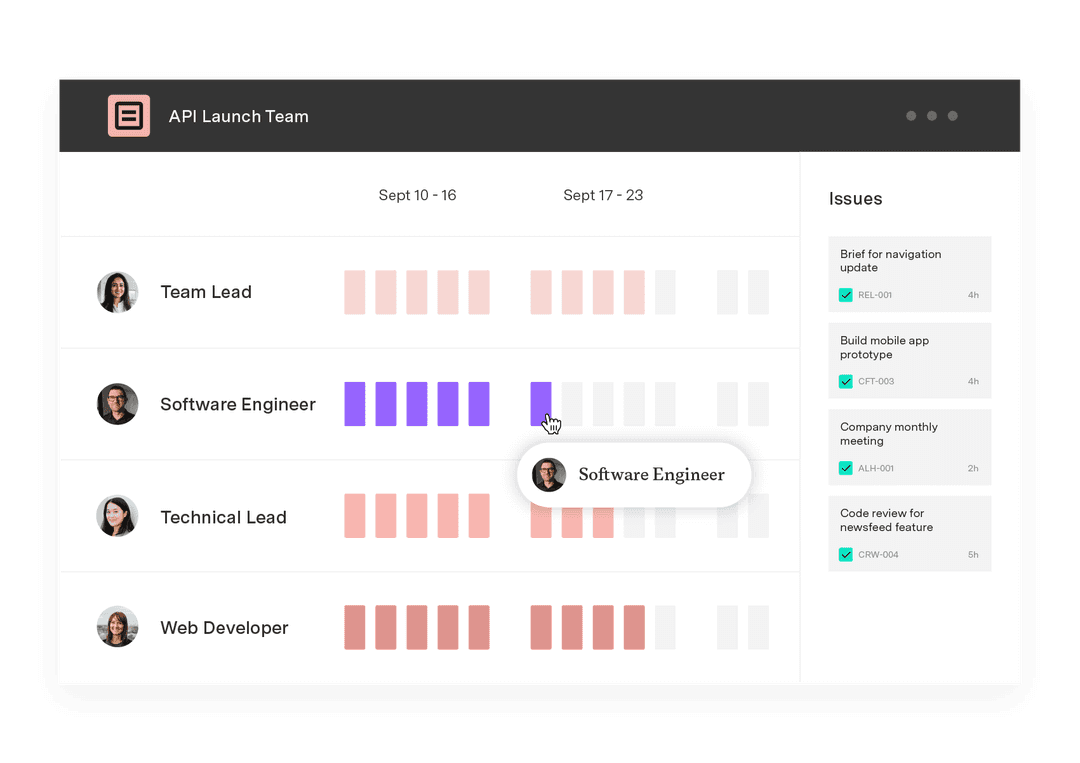Moving from delivery tracking to strategic value realization
Tempo Team
Planning cycles, sprints, and delivery metrics are all necessary. But to truly thrive, the focus has to shift from what was done to what value was realized.
Every project, program, and resource allocation has to tie back to high-level strategic outcomes. That's the promise of Strategic Portfolio Management (SPM).
The Tempo Adaptive SPM platform helps portfolio leaders adapt to accelerating change with clarity, using AI-informed scenario modeling to prioritize work, manage risk, communicat evolving plans, and keep investments aligned to strategic outcomes.
Tools alone can’t get you to that level of adaptive Strategic Portfolio Management. But at the same time, it’s impossible to get there without at least some of the right tools.
We believe that Tempo’s Strategy Collection delivers a toolkit that gets most enterprises what they need:
Visibility across the entire portfolio – knowing what's in flight, where resources are allocated, and what outcomes are emerging
Continuous alignment with strategy – ensuring the work being done actually maps to organizational goals
Agility in execution – the ability to replan, rebalance, and rescope when volatility hits
Predictive modeling – forecasting the impact of changes before leaders commit to them
Natural language that allows anyone – not just analysts – to query data and get answers
Here, we’ll walk through each tool in the Strategy Collection and how it helps companies use adaptive SPM to realize strategic value:
Core capabilities of adaptive SPM
Product | Core purpose | How it supports strategic value |
Build issue hierarchies across projects; aggregate work; create custom views | Provides visibility of work across the portfolio; roll up metrics to program or initiative level; spot blockers or misalignment early | |
Resource and capacity planning across teams and individuals; create plans, see availability, allocate time | Helps prevent over-commitment; ensures resources are used where most valuable; supports trade-offs when strategy shifts | |
Visual scheduling of dependencies and timelines; show how work streams interact | Assists in scenario planning, visualizing schedule risks, making shifts before delays become expensive | |
Track time spent, billing, costs; links financials to actual work | Enables measurement of financial value, ROI, margin; helps connect delivery and finance | |
Turn plans into boardroom-ready roadmaps; show how projects align with strategy | Keeps stakeholders aligned; ensures strategic direction is visible; connects plans to work being done in real-time | |
Build dashboards, custom reports; connect with data sources; surface key metrics; no-code charts for non-technical users | Supports decision making with data; exposes weak signals; lets leadership monitor value realization over time | |
BI Connectors for Jira | Connect Jira to Power BI, Tableau, BigQuery and other BI tools; build custom Jira reports with standard, custom fields, filters, and templates | Effortlessly export Jira data to BI tools for enterprise-grade analytics |
Tempo’s SPM suite is modular – you can adopt what's needed first, then scale across departments.
Get started with the Tempo Strategy Collection
Once the Strategy Collection is rolled out, you'll shift from delivery tracking ("did we finish X?") to value realization ("did we do the right X, at acceptable cost, with strategic alignment?").

Some measurable outcomes you should see:
Earlier identification and mitigation of risk, leading to fewer schedule overruns
Improved resource utilization with less idle or overloaded teams
More precise forecasting of cost and timeline impacts when priorities change
Clearer alignment among leadership, teams, and stakeholders on what work gets done (and what doesn't)
Improved financial performance (ROI, margins, budget adherence, governance)
Real strategic value comes from aligning work to strategy, optimizing capacity and cost, and continuously learning from what has been done.
Adaptability brings advantages. Get AI-enabled techniques for successful planning.
Access the guideOur Strategy Collection gives organizations tools to track delivery and realize value. By following an intentional implementation path – starting with visibility, then adding capacity, financials, roadmapping, and reporting – you can move from delivery tracking into strategic portfolio value realization.
"Tempo's unique approach to Adaptive Strategic Portfolio Management gives you custom, unified portfolio dashboards for enterprise-wide visibility and control." - Phil Le Marchand, Strategic Partnerships Program Lead at Adaptavist
When your portfolio becomes a source of real insight (not just progress reports), you've moved into adaptive strategy: agile, value-focused, and ready for whatever volatility comes next.
Plan, govern, and measure strategic initiatives from the boardroom to delivery teams.
See the Strategy Collection













































